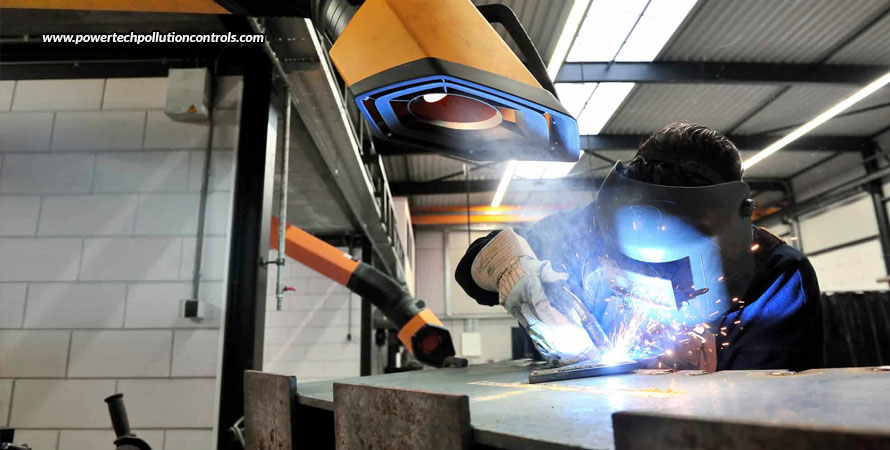
Risks To Health From Inhaling Welding Fume Particles
Scientific studies report that welding fumes can result in a variety of physical ailments as well as serious diseases like cancer, asthma, and Parkinson’s disease. When different types of metal are welded together, the welding fumes and the composition of the smoke vapour produced pose serious harm and threat to humans and their longevity when inhaled. It’s therefore crucial to use welding fume extractor India to catch these fumes and smoke produced in the welding area to provide optimum ventilation and air filtration.
Particles pose the biggest threat to health
The composition of welding fumes varies as per the materials being used and the welding procedure being executed. However, one fact remains that the welding fume is a combination of both airborne gases and fine particles. Among the gases that could be released are carbon monoxide, carbon dioxide, nitrous oxide, shielding gas, and ozone, all of which are detrimental. Along with this, fine particles are also released, which may contain the fragments of fluorides, metallic oxides, and metals like chromium, nickel, zinc, manganese, cobalt, lead, and copper.
Technical details on “dust-fall” and smaller particles
When produced, welding fume particles have a diameter of less than 1 μm, or 0.001 mm. However, when particles clump together, they grow larger. As a result, particles that range in size from 1 to 7 μm grow over time. Because they can enter the lungs deeply and are difficult for the cilia lining the respiratory tract to clear, the 1–7 m diameter particles pose the greatest health risk. The particles that are visible in the fume plume are typically heavier, or larger, particles that will quickly precipitate as “dust fall” onto nearby surfaces. The typical particle size in the breathing zone of a welder is 2 μm or less. If ventilation or extraction are not used to remove these lighter, smaller particles, they may stay in the air for several hours, posing great damage.
The more quickly ventilation can expel gases, the better
The plume of fume that rises from the welding site contains the maximum concentration of welding fume as well as other dangerous chemicals. The toxicity of the fume, its concentration, and the length of time the fume has been inhaled determine the level of danger in the absence of adequate ventilation and protective measures. The fume’s level of toxicity varies, depending upon the kind of welding technique, the welding materials used, and the type of material being welded. Depending on how long he is welding, a welder may be breathing in such fumes. Some fabricators work on welding for one or two hours a day, while others work nonstop. A quick calculation demonstrates that the longer one welds, the more fume is created, and the risk of inhaling the mixture of airborne gases and small particles increases. Indoor air quality is best improved when welding fume is caught at the source.
Fumekiller – The ideal solution
One ideal welding fume extractor India is the Fumekiller, from Powertech Pollution Controls. This particular equipment combines a high-efficiency two-stage electrostatic precipitator with electrostatic filtration technology to capture and control fumes, mist, smoke, and fine dust produced by welding, soldering, and other similar processes. With its unique features, the Fumekiller helps to create a workplace that is safer and healthier, by removing harmful airborne pollutants and thus getting rid of welding fumes dangers.


